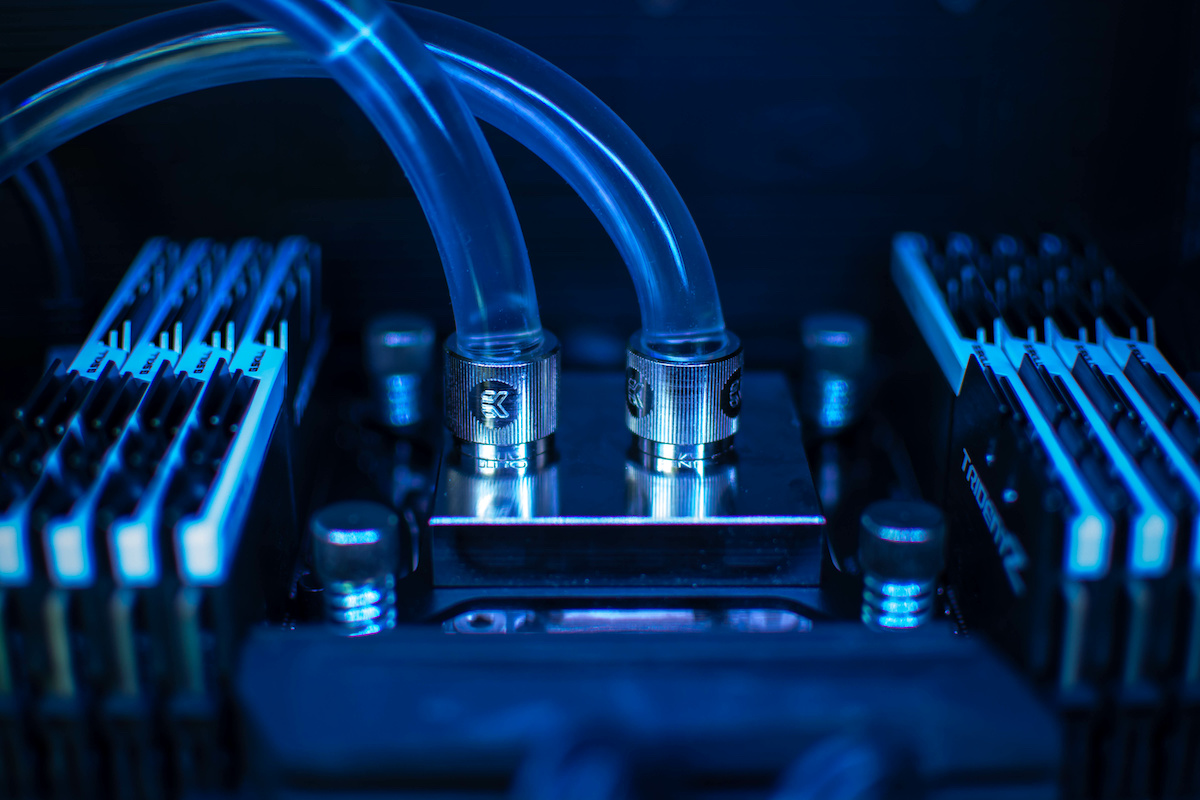Five Data Center Cooling Trends to Watch For18 min read

Data center cooling has been a constant topic of discussion at industry events and on industry publications, much like this one, for some time now. Much of these discussions are typically centered around optimizing the cooling infrastructure to maximize efficiency and ultimately reduce costs related to cooling. So it comes as no surprise that it was featured at the recent Open Compute Summit with Meta (Facebook) taking center stage with their liquid cooling announcement. Let’s take a look at this and other top data center cooling trends happening around the industry.
Liquid Cooling
Liquid cooling has been in the spotlight for several years. But its adoption by Meta as part of data centers supporting the “metaverse” has brought it renewed prominence. Like Google, Meta is looking at liquid cooling mainly for high-end, extremely dense rack configurations running power-hungry AI workloads that operate on GPU servers.
The company announced a new Air-Assisted Liquid Cooling (AALC) design for chip-level liquid cooling. AALC provides direct-to-chip liquid cooling, with dripless connections between IT gear and a liquid manifold for ease of maintenance. The goal is to be able to support up to 40kW. Meta is still wrestling with how to tightly control water temperature at high rack densities.
“The power trend increases we are seeing, and the need for liquid cooling advances, are forcing us to think differently about all elements of our platform, rack and power, and data center design,” said Alexis Bjorlin, Vice President of Engineering at Meta. “These trends will require different cooling technologies.”
Cold Plates
Meta is incorporating cold plates into its design, which is a similar approach taken by JetCool. Its micro-convective cooling technology boosts thermal efficiency through cold copper or aluminum plates placed against microprocessors. This architecture also employs improved flow dynamics as well as the targeting of hot spots to lower the energy consumption of the pumps. This solution is promoted as a way to eliminate evaporative cooling and achieve sustainability targets such as reducing water usage. However, an entirely liquid cooled data center is an expensive way to go green.
Server Fan Efficiency
A company named ChilliRack is taking a much lower cost approach: raising the efficiency of server fans by lowering their power draw by 40%. The empty space often found at the front and rear of the rack is used to create a pressurized plenum to provide better airflow control. Air is ducted from the data center to the inside of the rack and using a rack-level fan to replace smaller fans for individual servers.
Outside Air
The harnessing of outside air is a simple and cheap way to keep data centers cool while improving efficiency and reducing overall power draw. Yes, evaporative coolers use water but bring big cost benefits compared to mechanical chillers.
Outside air cooling is commonly thought of as applicable only to colder climates in northern states. However, Mee Industries promotes that its MeeFog system can cool a data center all year even during hot summers. Its system consists of multiple fogging units feeding hundreds of specialized nozzles that produce micro-fine fog droplets and multiple stages of cooling and humidification for the data center.
This technology has been in use for a decade at the Open Compute Project’s 150,000 square foot data center in Prineville, Oregon. The natural evaporative effect of water is used to cool the air. When temperatures rise, more stages of fogging are turned on. By introducing fog into the warm outside air, the data center continues to benefit from cool air. Such systems represent a way to balance the high cost of liquid cooling with low-cost air cooling.
But adding an entire new cooling system is only really something to be considered for new build data centers. Existing sites, though, can take advantage of the technology by using it to pre-cool condenser coils to boost compressor throughput and efficiency. Fogging increases refrigeration capacity during periods of higher ambient temperatures by evaporatively cooling air-cooled condensers. The additional capacity can allow up to 15-20% of existing compressors to be valved off if the facility does not need the increased capacity.
This approach was implemented to increase the capacity of the existing rooftop condenser units for an 80,000 sq ft urban data center. The retrofit enabled the data center to add more computing equipment without having to shut down the data center during summer heat waves. The MeeFog units operate on eight rooftop dry cooler condenser units when glycol temperatures exceed 100°F.
Eliminating Water Usage
Some areas of the country are in severe drought. They have placed heavy restrictions on water usage. Where this is the case, an alternative to evaporative cooling is KyotoCooling. It uses air-side economization via a thermal wheel to provide 90% effectiveness in heat rejection and cut Power Usage Effectiveness (PUE) below 1.25. The system works by pulling hot air into the Kyoto cooling unit via fans. The Kyoto wheel absorbs the heat from the air as it passes through, and the cooled air is then sent back to the data hall. In a separate plenum, outside air is pulled into the Kyoto cooling unit via fans, passes through the Kyoto wheel absorbing the heat and discharges it into the atmosphere. The Kyoto wheel continuously rotates between plenums to effectively transfer heat. It is said to use between 75% to 92% less power to run than traditional CRAH systems. Data centers using this technology include United Airlines and HP.
Real-time monitoring, data-driven optimization.
Immersive software, innovative sensors and expert thermal services to monitor,
manage, and maximize the power and cooling infrastructure for critical
data center environments.
Real-time monitoring, data-driven optimization.
Immersive software, innovative sensors and expert thermal services to monitor, manage, and maximize the power and cooling infrastructure for critical data center environments.

Drew Robb
Writing and Editing Consultant and Contractor
0 Comments